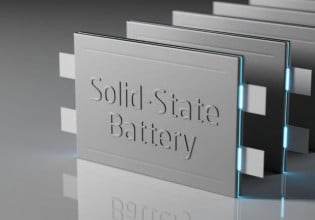FCO Power Inc. has announced the further development of its next-generation solid oxide fuel cell (SOFC) stack for residential fuel cell systems in existing apartments. According to the company, use of the thin, low-cost stack makes it realistic to install fuel cells in existing apartments, which account for approximately 40 percent of housing in Japan, beginning in 2020.
The Printed Fuel Cellâ„¢ is a SOFC in which all single cell layers, including separators (anode, electrolyte, cathode, and ceramic separator) are laminated repeatedly before sintering and subsequently simultaneously sintered only once as a stack. The total thickness of a single cell and separator is just 0.4 mm, which is approximately one tenth the thickness of conventional technology. Because it is so thin, the Printed Fuel Cell is said to achieve 5 kW/L, which is one of the highest levels in the world.
Additionally, the Printed Fuel Cell has a simple, thin laminated structure that requires a limited amount of material and parts, making it suitable for low-cost, automated mass production. As a result, FCO Power expects to be able to price the Printed Fuel Cell at a level that is well below NEDO’s target stack price of JPY50,000 /kW for 2020 to 2030.
The all-ceramic SOFC stack is said to have a unique stack cooling structure. As a result, the hot module volume, including heat insulation materials, is less than one quarter of that of existing technology, said the company. By leveraging high volumetric power density and low-cost stack technology, FCO Power and its alliance partners aim to commercialize the SOFC system in 2020, the year of the Tokyo Olympics.






